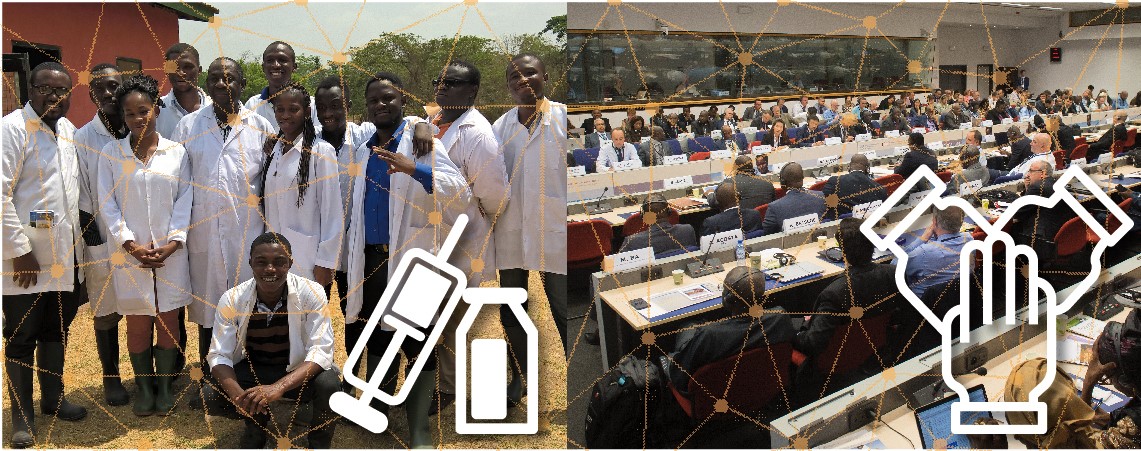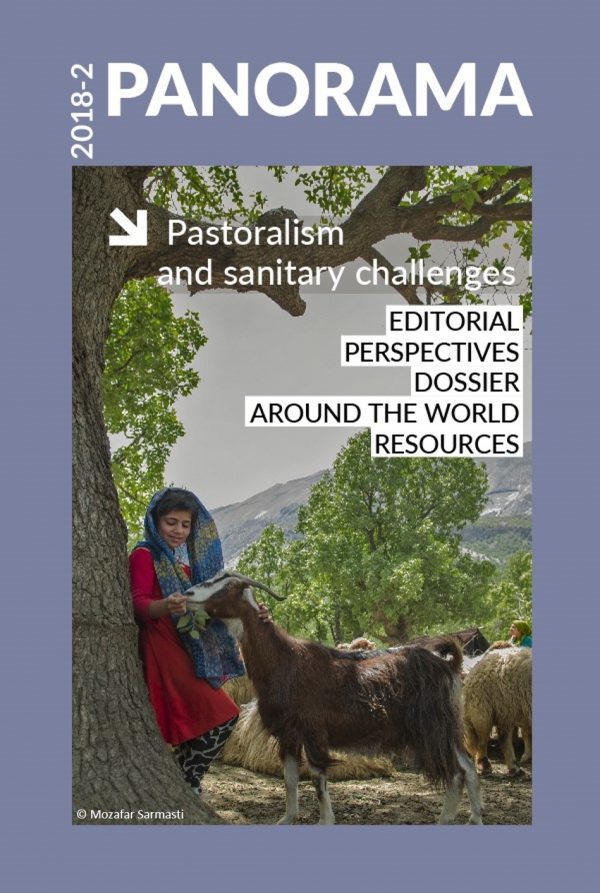Around the world Posted on 2019-02-19 15:58:57
Thematic events
The Peste des Petits Ruminants Global Research and Expertise Network (PPR–GREN)
First meeting in Vienna (Austria), 17–19 April 2018
The eradication of PPR is linked directly to other major global challenges, including food security, strengthening resilience, poverty alleviation and migration control, particularly in regions where conflict is raging. If eradication is achieved by 2030, it will also contribute towards the success of the United Nations’ Sustainable Development Goals (SDGs); especially SDG 1 (No poverty) and SDG 2 (Zero hunger).
In 2015, the Food and Agriculture Organization of the United Nations (FAO) and the World Organisation for Animal Health (OIE) endorsed the Global Strategy for the Control and Eradication of PPR (PPR–GCES). The Members of these organisations subsequently confirmed their commitment to the programme through formal resolutions of their governing bodies.
In 2016, the OIE and FAO established their joint PPR Secretariat and launched the PPR Global Eradication Programme (PPR–GEP) for 2017–2021, taking the first step towards eradication.
The governance structure of the PPR–GCES and PPR–GEP includes the PPR Advisory Committee, established in 2017, and the PPR Global Research and Expertise Network (PPR–GREN), which met for the first time from 17 to 19 April 2018 in Vienna (Austria), hosted by the International Atomic Energy Agency (IAEA).
The PPR–GREN aims to build strong partnerships between researchers, technical bodies, regional organisations, recognised experts and development partners, in line with the recommendations of the electronic conference on PPR organised by FAO and the OIE from 3 February to 15 March 2014.
This first meeting brought together representatives from FAO and OIE World Reference Laboratories, research institutes, National Veterinary Research Institutes in developing countries, wildlife conservation and civil society organisations, regional economic communities, PPR experts, and the joint FAO/IAEA Division, as well as staff from FAO and the OIE. The meeting was officially opened by Dr Meera Venkatesh, acting Deputy Director General for Nuclear Sciences and Applications, IAEA; Dr Matthew Stone, Deputy Director General of the OIE, charged with the International Standards and Science; and Dr Berhe Tekola, Director of the Animal Production and Health Division, FAO.
Main outcomes of the meeting
a) The meeting endorsed the terms of reference of the PPR–GREN, as a forum for scientific and technical consultations to foster a science-based and innovative debate on this disease.
b) Elections were held for the PPR–GREN Bureau, with the following results:
Chair
- Adama Diallo, Centre de coopération internationale en recherche agronomique pour le développement (CIRAD)
Representatives
- Amanda Fine, Wildlife Conservation Society (WCS)
- Jeremy Salt, Global Alliance for Livestock Veterinary Medicines (GALVmed)
- Hamid R. Varshovi, Razi Institute (Iran)
- Barbara Wieland, International Livestock Research Institute (ILRI).
c) The meeting defined the following main thematic areas, which needed to be addressed:
- PPR epidemiology, including socio-economic factors and the livestock–wildlife interface;
- PPR diagnostics and surveillance;
- PPR vaccines and delivery;
- outreach and advocacy, to help to raise awareness of the disease;
- resource mobilisation;
- local and national participation in carrying out the global eradication programme.
d) The meeting identified the priority research needs within the strategic framework of PPR–GEP:
- epidemiology, ecology and socio-economics;
- laboratory diagnostics and field sampling methods;
- PPR vaccine production, quality and delivery, including vaccines that enable differentiation between infected and vaccinated animals (DIVA);
- communication, in particular, translating research findings into narratives and policies.
e) The meeting also identified PPR–GREN opportunities for financial support and funding through target partners, and for data collection, sharing and analysis.
f) Finally, the meeting recommended that the PPR Secretariat, in collaboration with the PPR–GREN Bureau, convene an expert meeting to exchange views on research into PPR diagnostic tests, and agreed to consider the PPR vaccine producers’ group under the umbrella of the PPR–GREN.
The next meeting of the PPR–GREN is expected to take place in June 2019.
http://dx.doi.org/10.20506/bull.2018.2.2861












